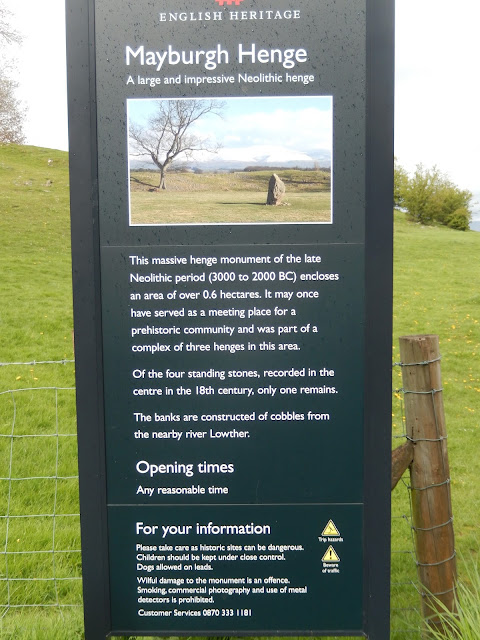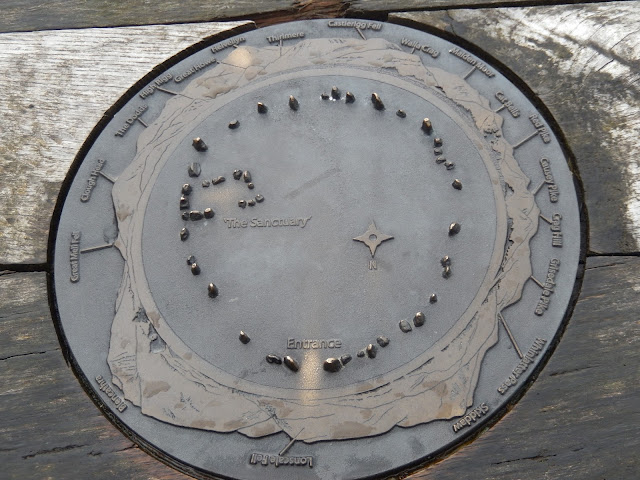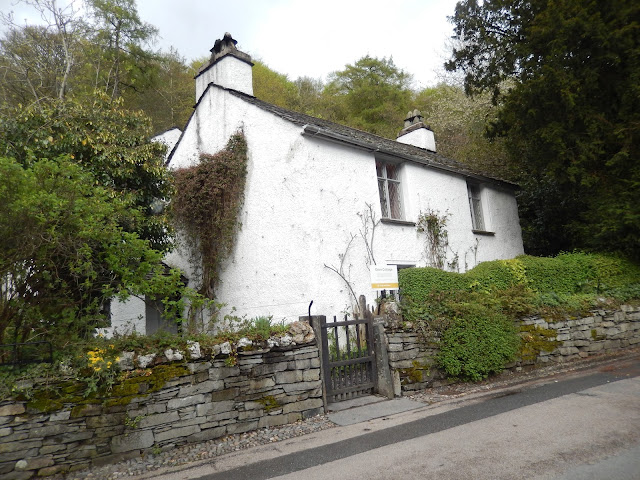Haia Pawb
After our visit to Long Meg and Her Daughters, Grevel drove us back towards our night’s accommodation in Grasmere, but not before we stopped off at three more interesting sites in Cumbria.
 |
| The English Heritage information board |
 |
| A view of the henge bank from the centre |
 |
| The henge, showing the standing stone in the centre and the pebbles forming the banks |
| A video of the henge, taken from the centre, starting at the entrance |
 |
| The standing stone in the middle of the henge |
 |
| Nearby information board |
 |
| Part of the interior of the henge |
 |
| The raised platform inside the henge |
 |
| The ditch and the bank around the raised platform |
 |
| Grevel on the raised platform, the houses beyond showing the road that cut the NW entrance |
 |
| On-site model of Castlerigg |
 |
| Information board |
 |
| Half the circle, taken from near the ‘Sanctuary’, the set of stones forming a rectangle inside the circle |
 |
| The other half of the circle, taken from the same spot |
| Video of Castlerigg, showing the circle, the surrounding mountains, and other visitors (human and sheep) |
 |
| Mood shot, taken just before we left |
 |
| A view of the Cader Idris range, which lies on the road between Corris and Dolgellau |
We arrived at How Foot Lodge in Grasmere early in the evening. The B&B is near the ‘foot’ of the How stream and is only a couple of doors down from Dove Cottage, where William Wordsworth and his sister, Dorothy, lived from December 1799 to May 1808.
 |
| How Foot Lodge |
 |
| Dove Cottage |
 |
| View of ‘The Lion and the Lamb, the profile of Helm Crag, a fell (a high barren landscape feature) seen from our bathroom window |
After checking in and cleaning up, we went to Tweedies Bar in the Dale Lodge Hotel a pleasant 10 minute walk away. We had a delightful meal topped off with single malt whiskies.
 |
| Night sky before dinner |
 |
| Night sky after dinner |
 |
| A coffin stone/resting stone on the Corpse Road between Ambleside and Grasmere |
|
In the morning, we visited St Oswald’s Church graveyard to pay homage to William and Dorothy.
|
| Gravestone of William Wordsworth and his wife, Mary |
 |
| Gravestone of Dorothy Wordsworth |
|
After this, we bought packets of the ‘best gingerbread in the world’, available from The Grasmere Gingerbread Shop, which is next door to the church. We headed back to Manchester, for Grevel to prepare for a weekend writing workshop and for me to travel on to Ynys Mon (Anglesey) to continue my research. (More about this is future blog postings.)
My thanks go to Grevel and his wife, Amanda, for their hospitality during my stay in Manchester and to Grevel himself for sharing his knowledge and love of British indigenous sites. My travels with him during my two research trips to the UK have led to incredible experiences of the magic and mystery in the landscape and the sacred endeavours of our ancestors.
|
| View from my bedroom window, The Harbour Hotel, Cemaes Bay, Ynys Mon |
By the way, when I changed the name of the blog, the email notification process that some of you accessed seemed to stop working. I’ve set up the process again using the new name, so if you wish to receive notification of new postings, please register using the ‘Follow by Email’ section on the right hand side of the blog. Thanks.
Cofion cynnes



Hi Earl,
A good read…there were no pictures of "Jackdaws" this time around?
All the best Bill
I want to live in How Foot Lodge.
Loved reading this last story/post, Earl. Thank you.
Now finish that book, Comrade.xx
Hi Bill and Elly
Thanks for the kind comments about the blog.
Bill, Yes, no jackdaws, but I may have some other photos of one or two soon 🙂
Elly, How Foot Lodge was a lovely place to stay and Grasmere itself would be great to live in, though the tourists might annoy occasionally 🙂 As for the book, I'm slowly working my way through the next draft. Talk soon.
Cheers
Earl
You may not have been awe but the photos show an amazing place. Hopefully I will see this for myself one day. The windswept trees, the palpable spirituality of place. What a wonderment.
Thanks, Nadie. I'm sure you'll gather at some point.
Hi Nadine, I've just read my last comment to you and realised the auto-correct had stuffed up both your name and a verb (I meant 'get there' not 'gather'). Apologies for that.